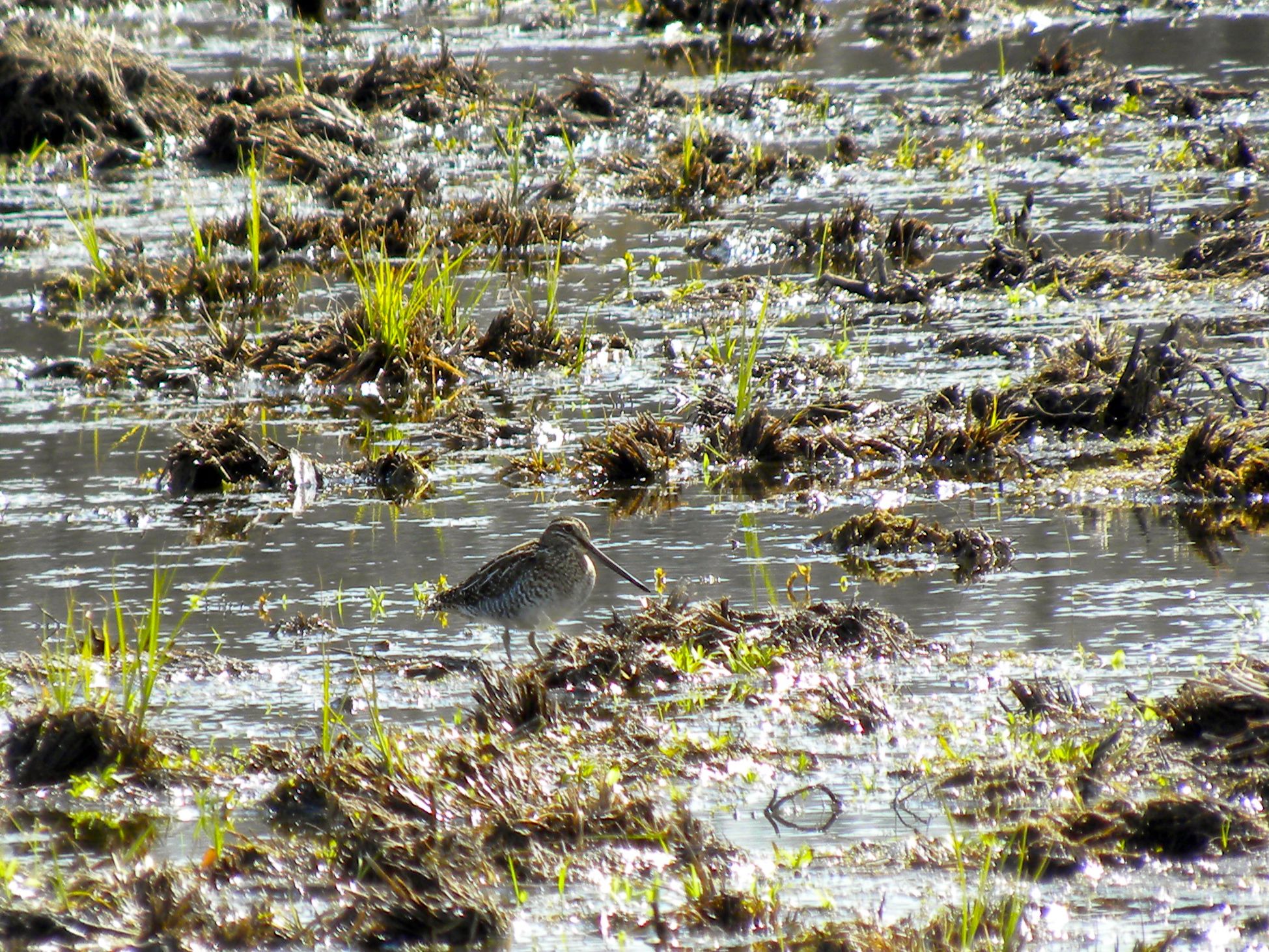August 16 2012. Mountsberg ON. If you’ve been following me closely over the past few days perhaps you’ve noticed some repetition in my birding. It’s been all about shorebirds of late; I’m trying to learn more about them.
Shorebirds make many birders throw up their hands in despair: “They all look the same.” and “They’re so difficult to make out.” And it’s true, they are difficult. But, like so many bird groups (and ferns and goldenrods too, I’m finding out) there’s really a rather limited palette of likely candidates at any one time.
Sometimes it’s the field guides that scare us off. The National Geographic Field Guide to the Birds of North America describes in detail about 80 species of what we might loosely call shorebirds. Eighty! But wait, around here only half of those shorebird species have ever been recorded; and of all of those I’d say you have a reasonable chance, if you work at it, of seeing about 15 in any one year.
It gets simpler as you study them because there are some distinctive family groups like plovers and sandpipers that help narrow the field. After that you have to concentrate. It’s not like reading People magazine, you do have to think for yourself.
Today for example, my companion and I found a mystery shorebird lurking at just about the limit of our aided vision. At first we knew just one thing, that it was different. It wasn’t a Greater or Lesser Yellowlegs and it wasn’t a duck or a Killdeer, there were plenty of those around. We squinted and strained to make out detail, and we could see that it had an extraordinarily long bill; twice the length of its head. It fed with a probing, sewing-machine action. We wondered if it was a Short-billed Dowitcher, but it was not quite right. As the bird moved around we started to make out some facial detail and distinctive stripes on its head and eventually, long lines down the length of its back. Wilson’s Snipe seemed most likely, our field guide supported our suspicions, and when it shuffled along with a snipe’s distinctive short-legged waddle, that clinched it. Interestingly once we knew in our minds what it was, it all became crystal clear literally and metaphorically; there was no doubt. A great learning experience.
My companion studied and triumphantly identified a rather drab Hooded Merganser and it became her Bird of the Day, but for me it was the hard-won Wilson’s Snipe. Here’s a photo of one taken earlier this year.
